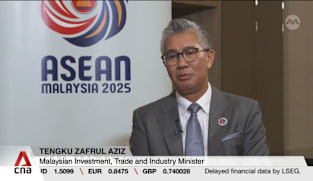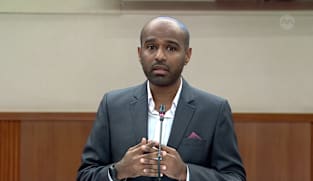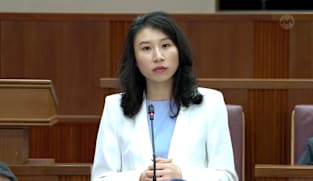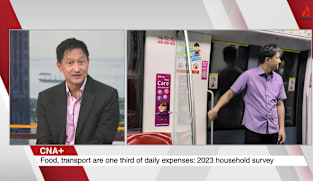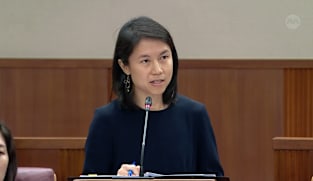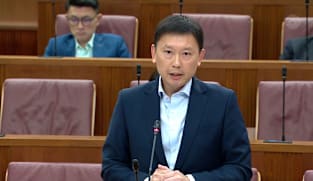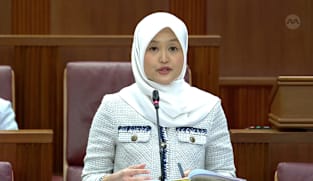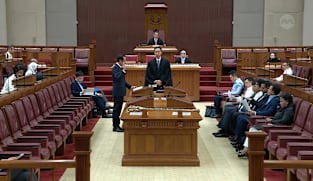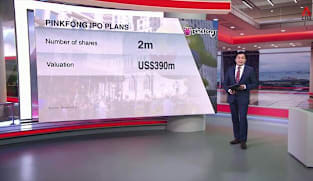Committee of Supply 2023 debate, Day 6: Chee Hong Tat on enhancing digitalisation, improving sustainability and streamlining business costs for Maritime Singapore to stay competitive
Like “waves in the ocean”, the global maritime sector has experienced ups and downs over the years but Singapore remains optimistic about the medium- to longer-term outlook for Maritime Singapore, said Senior Minister of State for Transport Chee Hong Tat. Speaking in Parliament on Friday (Mar 3), he said Maritime Singapore should be boosted by the development of Tuas Port and the growth of its international maritime sectors. However, there are driving forces that Singapore must prepare for, he said. He pointed out that Governments and companies are reconfiguring supply chains to enhance resilience while port operators and shipping lines are integrating adjacent functions and tapping on digitalisation and technology. There is also an increased emphasis on environmental sustainability. Mr Chee said Maritime Singapore is working to stay relevant and competitive by enhancing digitalisation, improving sustainability and streamlining business costs. On digitalisation, the Maritime and Port Authority of Singapore (MPA) will launch its next-generation vessel traffic management system in 2025 to safely handle more complex and numerous vessel movements. MPA will launch a tender to develop the system prototype this year for testing in the real-time operating environment. MPA will also establish a maritime cyber assurance and operations centre in collaboration with industry. When fully operational in 2025, it will provide real-time security monitoring and disseminate information to mitigate cyber threats, advise on post-incident measures and facilitate information sharing and training for stakeholders. Turning to environmental sustainability, Mr Chee said decarbonising is critical but the transition to a greener future will involve costs and trade-offs. He said the Government will “walk this journey with our companies”. From 2030, new harbour craft operating in Singapore’s port waters must be fully electric. MPA is working with the port terminals and harbour craft operators to pilot the implementation of charging stations. While Singapore does not compete on costs alone, the Government could help save time and money by reviewing its rules and regulations, said Mr Chee. It is exploring ways to move goods more efficiently between the land checkpoints and seaports to support multimodal connectivity. It is also reviewing transshipment procedures at the land checkpoints to reduce the number of permits companies need to apply for and help businesses cut costs. The Government is also simplifying the requirements for exports at the land checkpoints to reduce the level of screening required for goods from companies with strict safety and security processes in place for goods.
Like “waves in the ocean”, the global maritime sector has experienced ups and downs over the years but Singapore remains optimistic about the medium- to longer-term outlook for Maritime Singapore, said Senior Minister of State for Transport Chee Hong Tat. Speaking in Parliament on Friday (Mar 3), he said Maritime Singapore should be boosted by the development of Tuas Port and the growth of its international maritime sectors. However, there are driving forces that Singapore must prepare for, he said. He pointed out that Governments and companies are reconfiguring supply chains to enhance resilience while port operators and shipping lines are integrating adjacent functions and tapping on digitalisation and technology. There is also an increased emphasis on environmental sustainability. Mr Chee said Maritime Singapore is working to stay relevant and competitive by enhancing digitalisation, improving sustainability and streamlining business costs. On digitalisation, the Maritime and Port Authority of Singapore (MPA) will launch its next-generation vessel traffic management system in 2025 to safely handle more complex and numerous vessel movements. MPA will launch a tender to develop the system prototype this year for testing in the real-time operating environment. MPA will also establish a maritime cyber assurance and operations centre in collaboration with industry. When fully operational in 2025, it will provide real-time security monitoring and disseminate information to mitigate cyber threats, advise on post-incident measures and facilitate information sharing and training for stakeholders. Turning to environmental sustainability, Mr Chee said decarbonising is critical but the transition to a greener future will involve costs and trade-offs. He said the Government will “walk this journey with our companies”. From 2030, new harbour craft operating in Singapore’s port waters must be fully electric. MPA is working with the port terminals and harbour craft operators to pilot the implementation of charging stations. While Singapore does not compete on costs alone, the Government could help save time and money by reviewing its rules and regulations, said Mr Chee. It is exploring ways to move goods more efficiently between the land checkpoints and seaports to support multimodal connectivity. It is also reviewing transshipment procedures at the land checkpoints to reduce the number of permits companies need to apply for and help businesses cut costs. The Government is also simplifying the requirements for exports at the land checkpoints to reduce the level of screening required for goods from companies with strict safety and security processes in place for goods.








